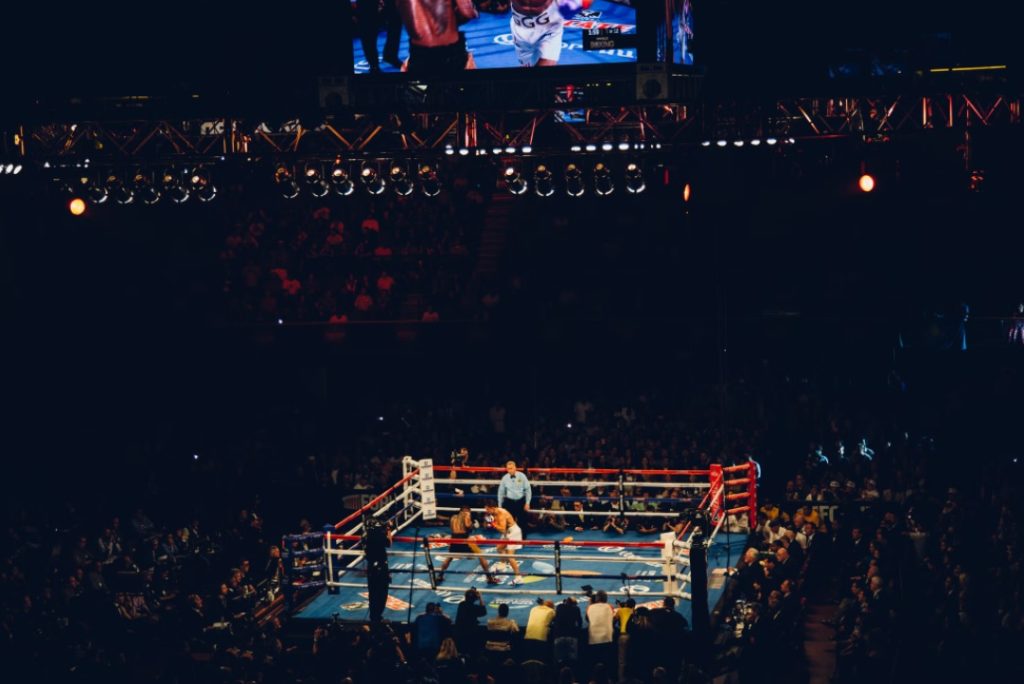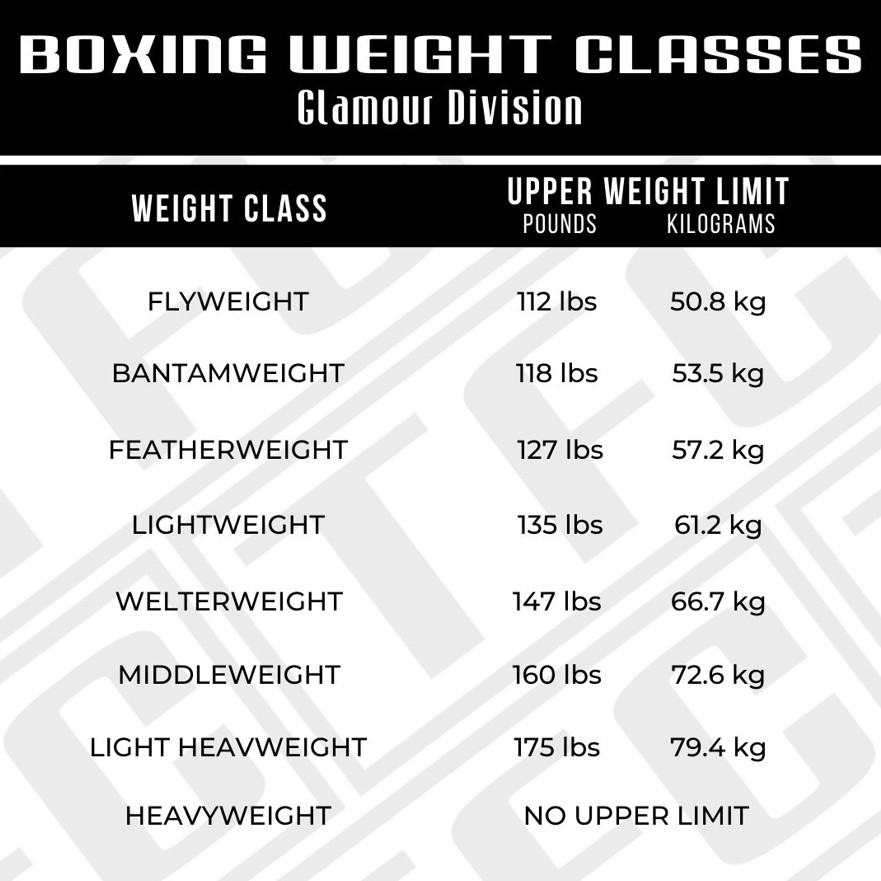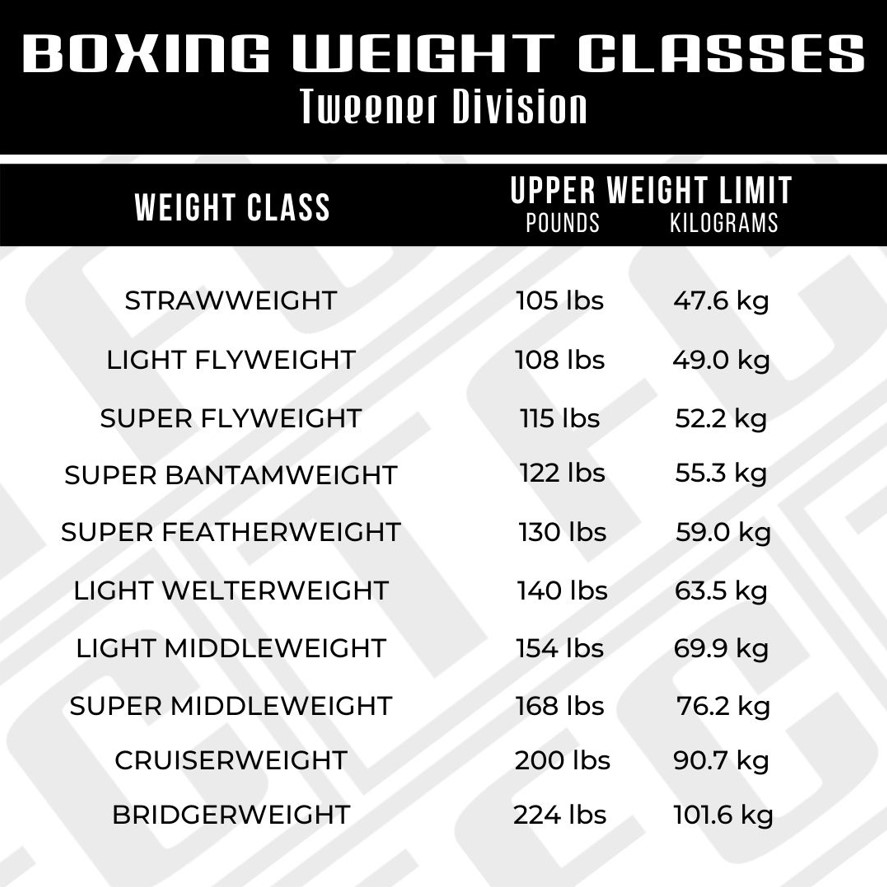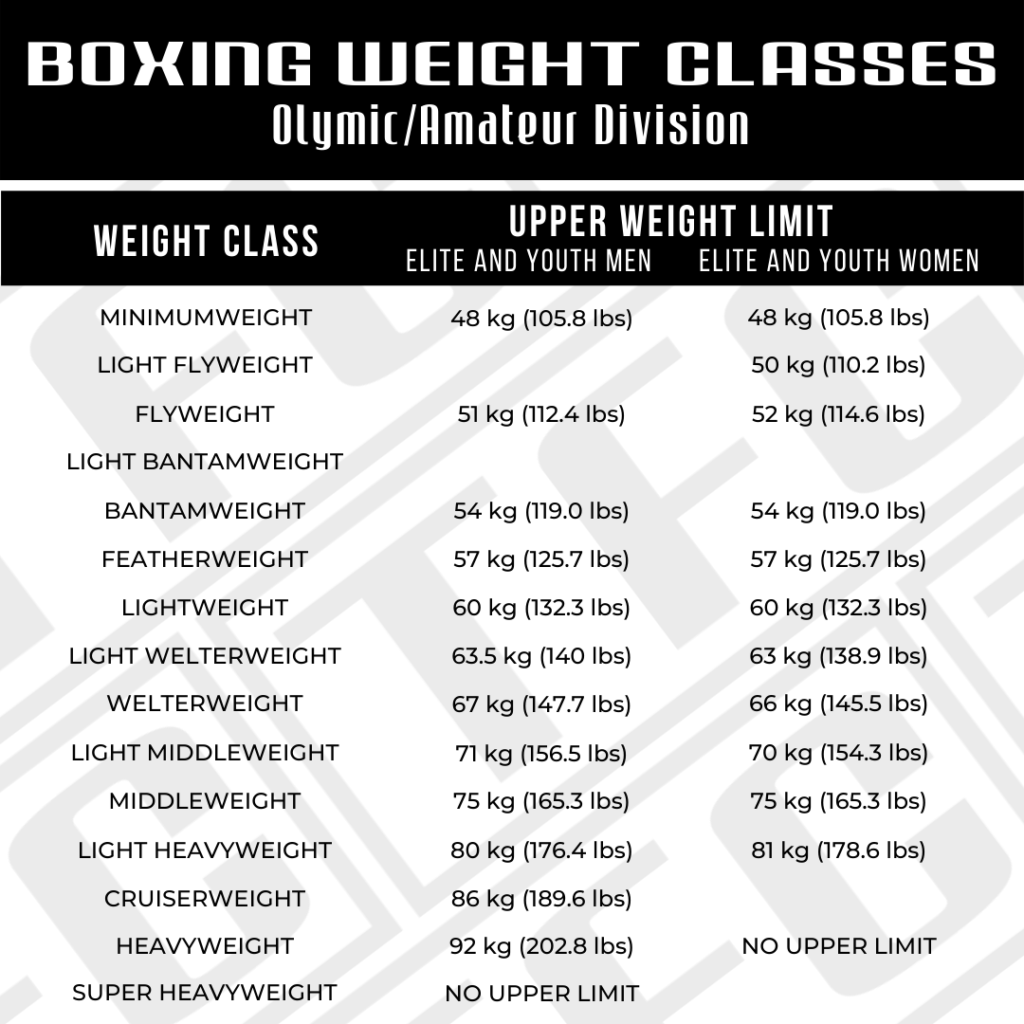Upcoming Events
-
Nov29
TFC Awards Gala
Latest Articles
Boxing Basics: What’s Up With Boxing Weight Classes?
24 March 2022
Strawweight, bantamweight, heavyweight, and every other -weight in between. If you’ve ever seen a boxing match, you’ve heard at least one of these -weights before. Why are there so many boxing weight classes, and what makes them so important?
In this article, we’ll explore everything there is to know about these weight categories.
-
Why boxing weight classes are important
Boxing is, first and foremost, a spectator sport. People pay to watch fighters punch it out in a test of skills to see who the better fighter is. It has become an industry of its own, and many boxers have made a livelihood out of fighting. That said, there are many dimensions to the significance of boxing weight classes:
-
1 People enjoy the unpredictability of an evenly matched fight
How boring would it be if you knew how a fight would end before it even began? Sports spectatorship is all about the thrill, the odds tipping to one side or the other. There are whole communities dedicated to speculating about possible outcomes. And there’s a lot of excitement in finding out whether their guesses are correct.
This excitement increases tenfold if sports betting gets into the mix. Being right about how it would end will not only then be a matter of satisfaction. It’ll also be a matter of profit.
-
2 Because physics
In the wild, bigger animals naturally have the edge over smaller ones in terms of brute force. The same concept applies to people, in the sense that bigger people have more force to work with.Matching fighters with a big size gap would put the smaller ones at a disadvantage. We’re not saying that smaller fighters won’t have a chance against bigger opponents. (After all, nothing is impossible.) However, the odds do stack up against smaller fighters.
Given that the fighters are of equal skill, a weight gap has implications in reach and force. A smaller fighter would enter the opponent’s range long before getting close enough to land a hit. (And if that isn’t unfair, we don’t know what is!)
Also, remember Newton’s second law of motion? F=MA. An object’s force is the product of its mass and acceleration. A heavyweight fighter’s punch can deal a hell of a lot more force than a strawweight’s. Just imagine how much damage a bigger guy can deal a smaller opponent.
That said, we have to mention that boxing is not just about force. It’s about people showing off their hard-earned skills. And that’s why…
Boxing weight classes ensure that matches remain a showcase of technical expertise.
Despite the sport’s brutality, boxing is more than just pummeling your opponent. Instead, it is a highly technical sport with many nuances. People are not there for violence (though that may add some appeal). They are there to see skilled fighters and how they perform in combat.
-
3 It creates a safer competitive environment for fighters
The nature of boxing is dangerous enough as it is. In a mismatched fight, the smaller fighter is at greater risk of getting an injury they can’t recover from. Having fighters face opponents roughly their same weight adds a layer of protection.
Now that we know why they’re important, let’s move on to the actual boxing weight classes.
-
Boxing Weight Classes
Boxing began in history with little to no weight requirements. Needless to say, many died of sport-related injuries. In 1909, the National Sporting Club of London established the first set of boxing weight categories. As the years passed and more organizations have gotten more involved in the sport, these categories further split up.
Glamour divisions
First, let’s talk about the glamour division. It’s also known as the traditional or classic division, and is the original eight boxing weight classes. These are the most widely recognized divisions in boxing.
Tweener divisions
Then comes the tweener divisions, the newcomers. They’re pretty easy to identify, with the super, light, or junior in front of their names.
Olympic divisions
Finally, the boxing weight classes used in the Olympics. The International Boxing Association (AIBA) established the amateur/Olympic divisions in 1946.
-
The Catchweight
Technically, the catchweight is not a boxing weight class. Instead, it’s a nonstandard weight limit that fighters in a bout agree upon. There are many reasons why fighters may want to settle on a catchweight, and here are some examples:
- Boxers from different weight categories usually don’t want drastic weight changes. In this case, they may agree to meet halfway for a bout.
- If Fighter A fails to meet the weight limit, Fighter B has the liberty to decide whether to continue the match or not. If they do, Fighter A’s weight becomes the new limit.
-
Fighters usually move up in weight category as they grow older
Boxers begin fighting at the lowest weight they can. As they grow older, their bone density and muscle mass increase due to constant training. They naturally progress to higher weight categories as a result.
Becoming a multiple champion, or winning titles in various weight categories, is a major achievement in boxing. Some of the industry’s biggest names, in fact, held multiple titles at once. Some examples are Oscar de la Hoya, Manny Pacquiao, and Floyd Mayweather Jr.
-
How boxing weigh ins work
For anyone who’s ever tried to lose weight, we know how hard it is to actually do it. Boxers have experience in cutting weight and already know the most efficient methods. That doesn’t make it too much easier, though, and it’s very possible that boxers don’t make their weight.
And when that happens with a small excess, they may strip until they hit the weight requirement. Some may even go so far as to strip totally naked. But if the excess is too significant, what happens then?
Well, depending on the fight contract, not making the weight may go several ways:
- The fighter gets disqualified, with the opponent adding a win to their record,
- The fight may proceed, with a portion of their purse (20-30%) divided between the opponent and the commission,
- They may get a few hours to get their weight down (usually in amateur bouts),
- The commission finds an emergency replacement, or
- The fight gets cancelled.
-
Dehydration and the rehydration clause
In the weeks leading up to the weigh-ins, fighters lose weight through diet and exercise. If they are still significantly above their boxing weight classes a few days prior, they resort to more drastic measures.
Fighters may dehydrate by fasting and sweating it out in training. Some also actively try to pull water out of their bodies through concentrated salt baths. Salt baths are a very effective method, and a fighter can lose several pounds in minutes. That means a fighter can go way under their usual weight to get a size advantage. However, it is a hazardous practice, and the extreme dehydration has short-term and long-term health risks.
Some promotions avoid this scenario by adding a rehydration clause. They put a ceiling on the amount of weight a fighter may regain after rehydration. This limits the offset between the fighter’s weight during weigh-in and the start of the fight.




:format(webp)/cdn.vox-cdn.com/uploads/chorus_image/image/60684819/970000338.jpg.0.jpg)
